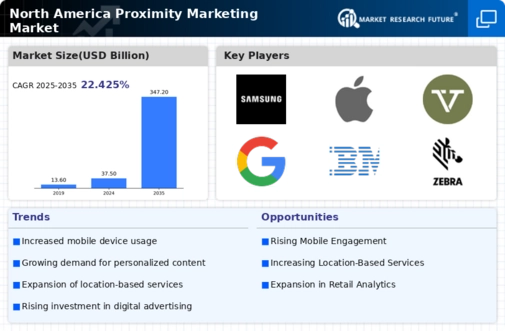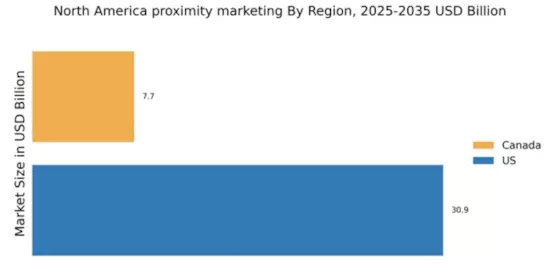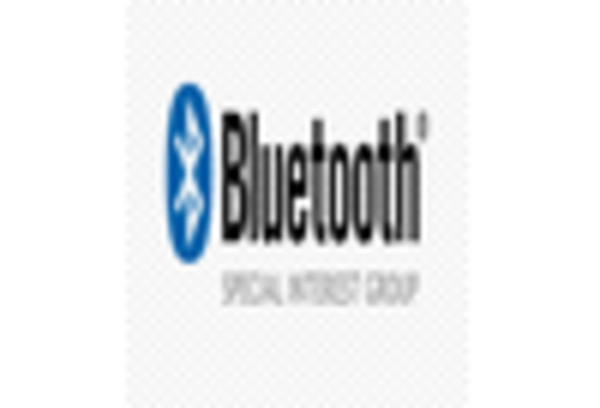Growing Emphasis on Data Privacy
The proximity marketing in North America faces a growing emphasis on data privacy, which significantly impacts marketing strategies. As consumers become increasingly aware of their data rights, businesses must navigate the complexities of privacy regulations. The implementation of laws such as the California Consumer Privacy Act (CCPA) has prompted companies to adopt more transparent data collection practices. This shift may initially pose challenges for marketers, yet it also presents an opportunity to build trust with consumers. By prioritizing data privacy, businesses can enhance their brand reputation and foster customer loyalty. As a result, the proximity marketing market is likely to evolve, focusing on ethical data usage while still delivering personalized experiences.
Rising Demand for Personalized Marketing
The proximity marketing in North America experiences a notable surge in demand for personalized marketing strategies. Businesses increasingly recognize the value of tailoring their marketing efforts to individual consumer preferences. This trend is driven by advancements in data analytics and consumer behavior insights, allowing companies to deliver targeted promotions and advertisements. According to recent data, approximately 70% of consumers express a preference for personalized experiences, indicating a strong market potential. As brands leverage proximity marketing technologies, such as beacons and geofencing, they can enhance customer engagement and drive sales. This shift towards personalization is likely to propel growth in the proximity marketing market, as businesses seek to create meaningful connections with their customers.
Expansion of Retail and E-commerce Sectors
The proximity marketing in North America is experiencing growth due to the expansion of both retail and e-commerce sectors. As brick-and-mortar stores adapt to changing consumer behaviors, they increasingly integrate proximity marketing strategies to enhance in-store experiences. Simultaneously, e-commerce platforms are leveraging location-based marketing to drive foot traffic to physical locations. Recent statistics indicate that retail sales in North America are projected to reach $5 trillion by 2026, underscoring the potential for proximity marketing to influence consumer purchasing decisions. This dual expansion creates a fertile ground for proximity marketing initiatives, as businesses seek to bridge the gap between online and offline shopping experiences.
Technological Advancements in Mobile Devices
The proximity marketing in North America is significantly influenced by the rapid technological advancements in mobile devices. With the proliferation of smartphones and tablets, consumers are increasingly equipped with tools that facilitate location-based marketing. As of November 2025, over 85% of the population in North America owns a smartphone, providing marketers with a vast audience for proximity marketing initiatives. Enhanced GPS capabilities and improved connectivity enable businesses to implement more effective marketing strategies. This technological evolution not only allows for real-time engagement but also fosters a more interactive consumer experience. Consequently, the proximity marketing market is poised for growth as businesses capitalize on these advancements to reach their target audiences more effectively.
Increased Investment in Marketing Technologies
The proximity marketing in North America is witnessing increased investment in marketing technologies, which is reshaping the landscape of consumer engagement. Businesses are allocating substantial budgets towards innovative tools and platforms that facilitate proximity marketing efforts. As of November 2025, it is estimated that marketing technology spending in North America will exceed $200 billion, reflecting a growing recognition of the importance of technology in driving marketing success. This influx of investment enables companies to adopt advanced solutions, such as artificial intelligence and machine learning, to optimize their proximity marketing strategies. Consequently, the market is likely to see enhanced effectiveness in targeting and engaging consumers, ultimately leading to improved return on investment.


















Leave a Comment